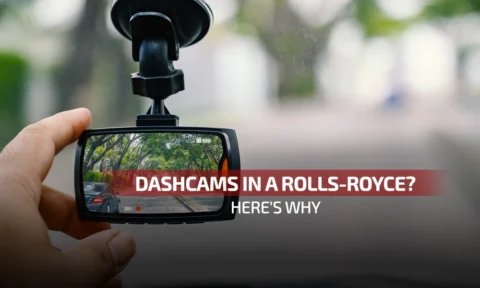Owning a luxury car feels like you’ve earned something.
The buttery leather, the whisper-quiet doors, the badge that means something.
But here’s the ugly truth no one tells you: the second that check engine light flickers—or your air suspension gives up—you’re at the mercy of either a specialist or a salesman in disguise.
And the big question that haunts every luxury car owner is this:
“Do I actually need to replace this part… or am I just getting ripped off?”
Whether you drive a Range Rover, a G-Wagon, or a Porsche Taycan, understanding when to say yes (and when to push back) could save you thousands—and your sanity.
Key Points at a Glance
- Luxury car parts are expensive, but not everything needs replacing outright.
- Some repairs (like brakes or control arms) are often upsold early.
- Watch out for shops that push OEM parts without offering rebuild or refurb options.
- Knowing the difference between a wear item and a revenue item is crucial.
- Always ask for the fault code, a second opinion, and a parts breakdown before agreeing.
The Real Problem: Repair or Replace Becomes a Sales Pitch
Most luxury service centers know you’re either:
- Too busy to research, or
- Too cautious to say no.
That’s how you end up with a $3,400 quote to replace “failing sensors” or an entire headlight unit—when the real issue was a $120 harness or a software glitch.
Parts That Are Often Replaced Too Early
Let’s call out the common culprits:
1. Suspension Components
Air struts, bushings, control arms—they’re wear items, yes, but not on a clock.
If your ride feels floaty or clunky, get it inspected—don’t agree to a full replacement on “feel” alone.
2. Brake Rotors and Pads
Luxury cars have big brakes, but some dealers push replacement when pads are still at 40% life.
Tip: Ask for pad thickness in mm and compare it to the spec. Don’t just trust “they’re low.”
3. ECU or Electrical Modules
These are rarely dead. Often, they just need a software update, fuse change, or reprogramming.
If your repair quote involves replacing a full ECU—get a second opinion.
4. Headlight Assemblies
A flickering LED doesn’t mean the whole $2,000+ headlamp needs replacing. Sometimes it’s a ballast, wiring fault, or water ingress that can be fixed.
So When Should You Replace the Part?
Here’s the short list of situations where replacement makes sense:
- Safety-critical systems are compromised (e.g., ABS pump failure, power steering leak).
- The part is non-serviceable (sealed units like integrated sensors in modern air suspensions).
- The cost to repair or rebuild is close to replacement (within 15–20%).
- You’re out of warranty, and delaying could cause downstream damage (like ignoring a coolant pump issue).
And if you’re prepping for resale?
Sometimes it’s worth replacing a borderline part for peace of mind—or leverage during negotiation.
Frequently Asked Questions
Why are luxury car repairs so expensive?
Because of the technology, branding, and specialization required. Most luxury parts are imported, and the labor rates are higher due to the training and certifications involved. Even a basic part—like a sensor—can cost triple compared to non-luxury models.
Can I use aftermarket parts in a luxury vehicle?
Yes, in many cases. Aftermarket parts for brands like Mercedes, BMW, and Audi are often just as good, especially for non-critical components. The key is working with a specialist mechanic who can recommend trusted alternatives.
Are extended warranties worth it for luxury cars?
In most cases—yes. Once your factory warranty ends, repairs can escalate fast. A well-chosen extended warranty can easily pay for itself with just one major repair (like a failing air suspension or infotainment unit).
Is it safe to service my luxury car at an independent garage?
Yes, as long as they specialize in your make and use certified parts. Many former dealership techs now run independent shops with the same diagnostic tools—just without the dealership markup.
How do I know if I’m being upsold on a repair?
Ask for the fault code, the old part (after replacement), and a breakdown of labor vs. material. If the answer feels vague or the part wasn’t tested—get a second opinion.
The Real Cost of Blind Trust
Let’s take an example.
A customer with a 2018 BMW 7 Series walks into the dealership with a suspension warning.
Diagnosis?
Replace all four air struts: AED 25,000 (~$6,800).
Second opinion from an independent Euro specialist?
One strut had a leak. The rest were fine. Total bill: AED 7,000 (~$1,900).
You don’t need to know every part of your car. But you do need to know when to pause and ask better questions.
How to Protect Yourself
Here’s a simple checklist next time a luxury repair service quote hits your inbox:
- Ask for the fault code and diagnostic printout
- Request a breakdown of labor vs part cost
- Check if the part can be rebuilt or sourced refurbished
- Look up the OEM vs aftermarket price
- Get a second opinion, especially for high-ticket jobs
- If in the UAE, check if the repair center is authorized by your warranty provider
Bottom Line: Don’t Confuse Prestige with Pressure
Just because your car costs six figures doesn’t mean you have to nod along with every expensive repair.
Sometimes it’s needed. Sometimes it’s padded.A smart luxury car owner knows when to spend and when to push back.







